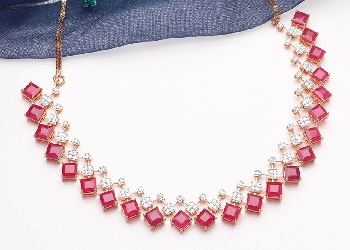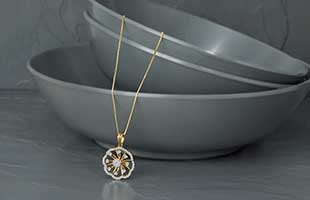I2 Clarity Diamond: Things to Know About Before Buying
by Francis Alukkas | 22 March 2023 | DIAMOND JEWELLERYDiamonds are widely considered the most beautiful and valuable gemstones on the planet. But what makes a diamond valuable? Many factors contribute to a diamond's value, including its cut, carat weight, and color. But perhaps one of the most important factors is the diamond's clarity. However, it is essential to note that the clarity grade of a diamond should be viewed in conjunction with other factors such as carat weight, color, and cut. A larger diamond with a lower clarity grade may still be more valuable than a smaller diamond with a higher clarity grade.
What is Diamond clarity ?
The clarity of diamond refers to the extent to which a diamond is free from inclusions and blemishes. Inclusions are internal flaws such as cracks, air bubbles, and other minerals, while blemishes are external flaws such as scratches and nicks. The clarity of a diamond is determined by the number, size, nature, and location of these inclusions and blemishes.
Diamond clarity is assessed on a scale that ranges from internally flawless (IF), which means the diamond has no internal flaws visible under 10x magnification, to Included (I1, I2, and I3), which means the diamond has inclusions that are easily visible to the naked eye. In between these two extremes are VVS (very, very slightly included), VS (very slightly included), SI (slightly included), and I (included) categories. Here, we will focus on diamond clarity of I2. Also, Read: Indian Diamond Jewellery Trends in 2022 and Beyond
What is an I2 Clarity Diamond?
An I2 clarity diamond is a diamond that has inclusions that are visible to the naked eye. These inclusions can be seen without magnification and may affect the diamond's transparency and overall appearance. The inclusions in an I2 clarity diamond may be large, numerous, or located in such a way that they are particularly noticeable.
While an I2 clarity diamond may not be considered as desirable as a higher clarity diamond, it can still be a beautiful and valuable gemstone. The key is to find an I2 diamond that has inclusions that are not too distracting and do not greatly affect the diamond's overall appearance.
Since I2 clarity diamond prices are generally less expensive due to their availability, it can be a good choice for someone who wants a larger diamond without spending a fortune. However, it is still important to choose an I2 diamond that has good cut and color grades, as these factors can greatly affect the diamond's appearance and value.
Evaluating an I2 Clarity Diamond
Anybody who wants to buy diamond jewelry has to evaluate them. When evaluating an I2 clarity diamond, there are several factors to consider in the diamond clarity and color. These include:
1. Location of the inclusions: Inclusions that are located in the center of the diamond may be more noticeable than those located near the edge or the bottom of the diamond. Inclusions that are close to the surface of the diamond may also be more visible.
2. Size of the inclusions: Larger inclusions are generally more noticeable than smaller inclusions. Inclusions that are very small or clustered together may be less noticeable.
3. Number of inclusions: A diamond with many inclusions may be more distracting than a diamond with just a few inclusions.
4. Type of inclusions: Some types of inclusions may be more noticeable than others. For example, inclusions that are dark or have a different color than the diamond may be more noticeable.
5. Overall appearance: Ultimately, the most important factor when evaluating an I2 diamond is its overall appearance. If the diamond appears beautiful and does not have distracting inclusions, it can still be a valuable and desirable gemstone.
Tips for Buying an I2 Clarity Diamond
If you are considering buying an I2 clarity diamond, there are several tips to keep in mind:
1. Choose a reputable jeweler: A reputable jeweler will provide you with a diamond grading report that includes information about the diamond's clarity, cut, and color. This report can help you make an informed decision about whether the diamond is a good choice for you.
2. Consider the diamond's cut and color: A diamond with a good cut and color grade may be more desirable than a diamond with a lower grade, even if they have the same
3. Settings: Diamonds with an I2 clarity grade may have inclusions that are more visible than diamonds with higher clarity grades. To minimize the appearance of inclusions, consider a setting that masks the inclusion or enhances the diamond's appearance. For example, a bezel setting covers more of the diamond's surface, making any inclusions less visible.
Previous Blog Next Blog









.jpg)
.jpg)

